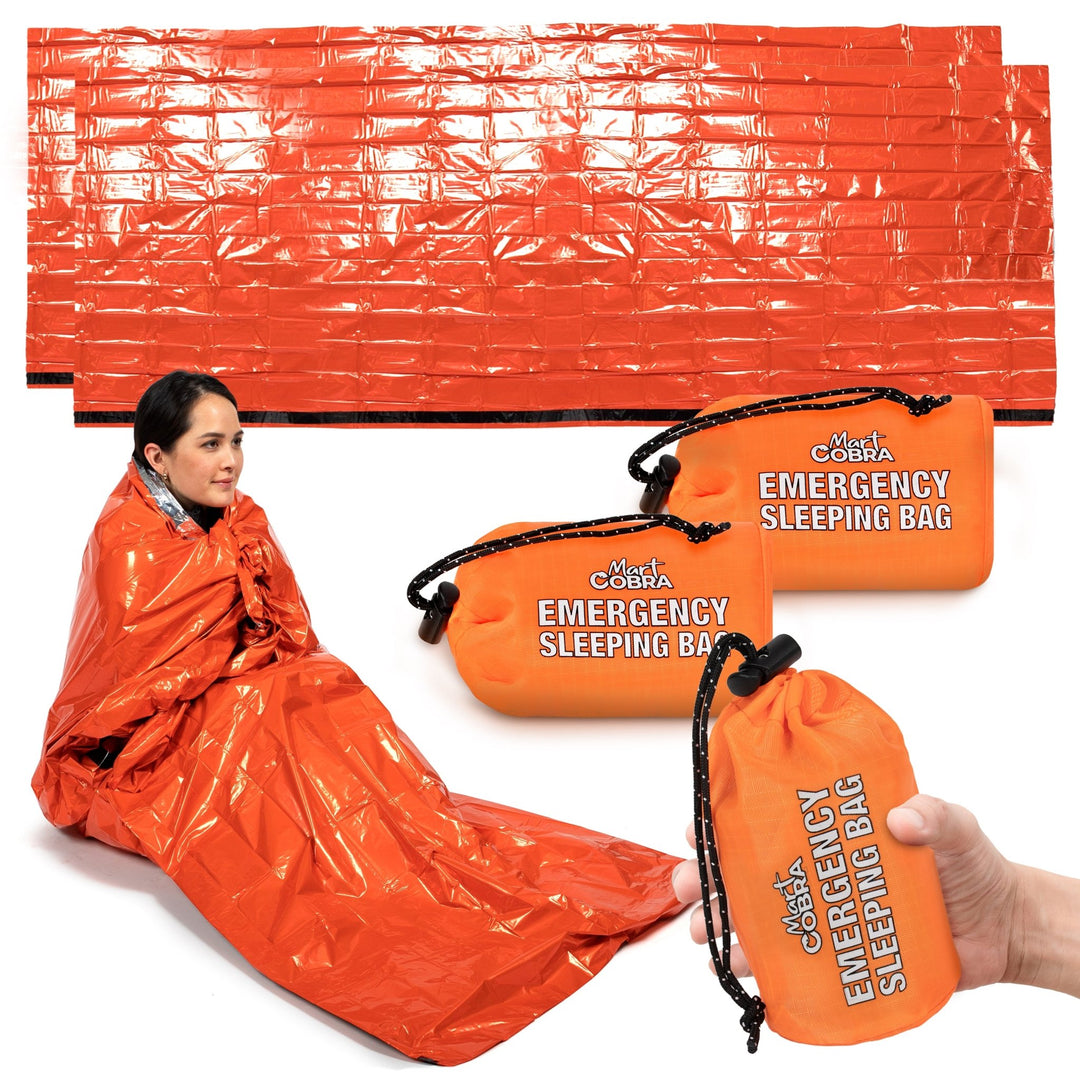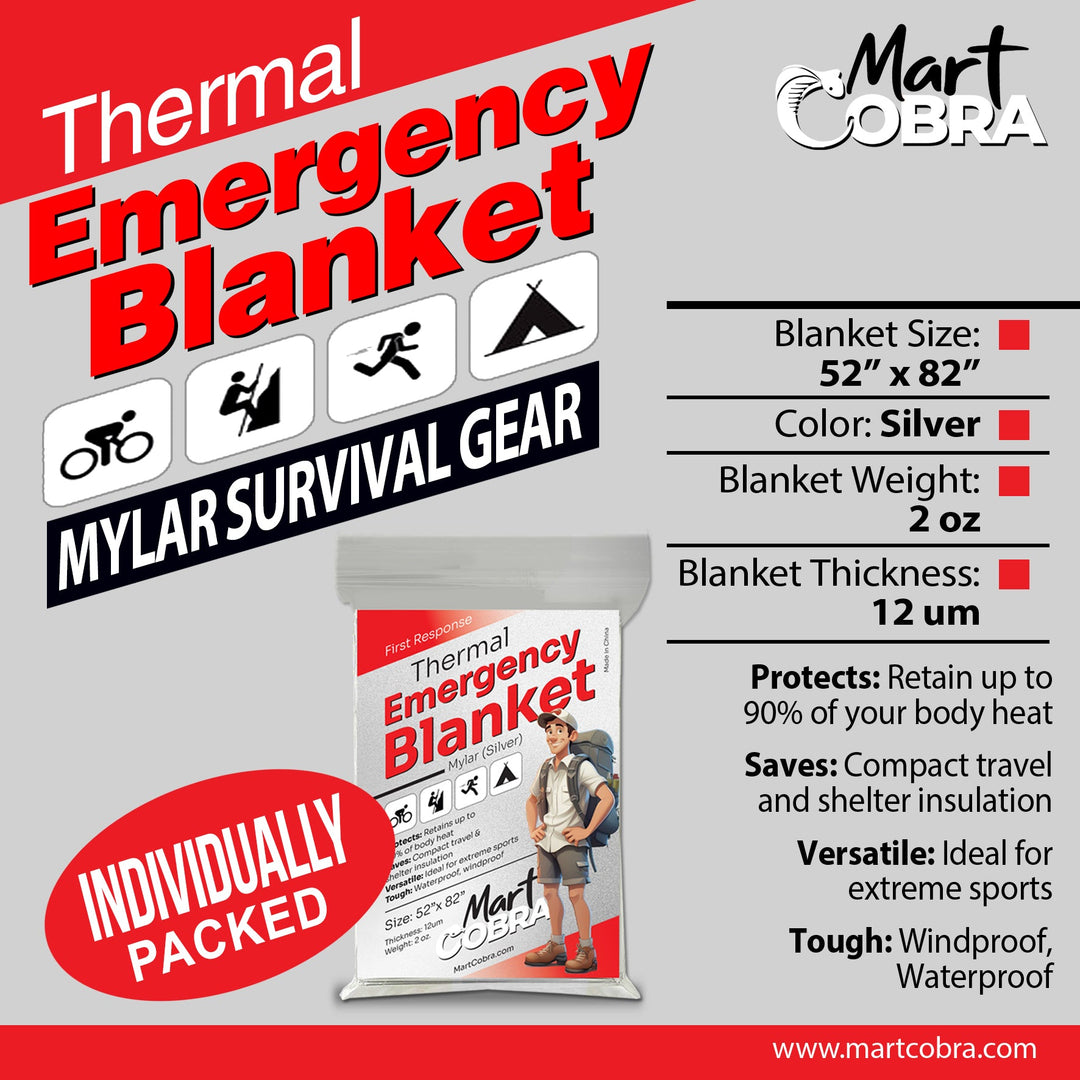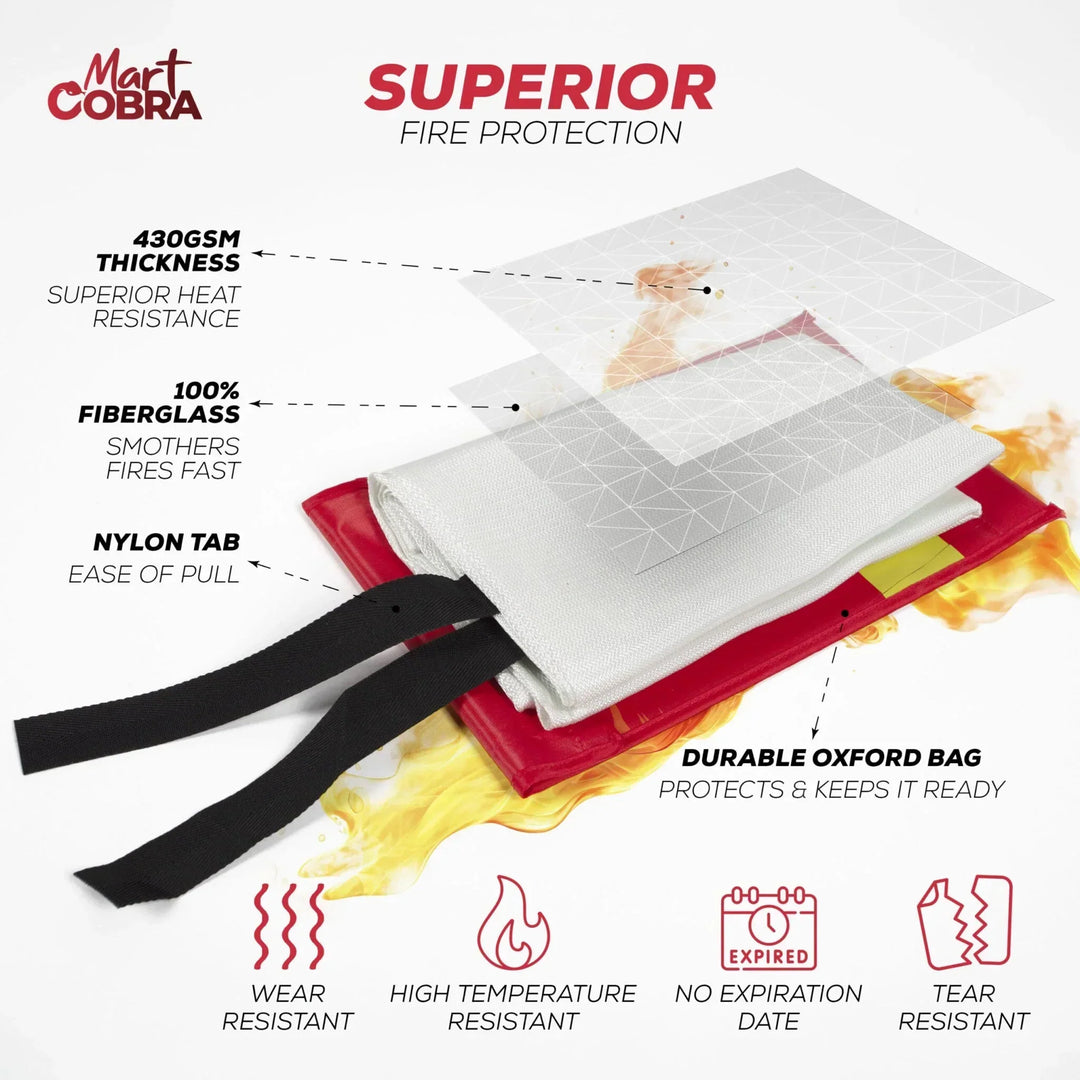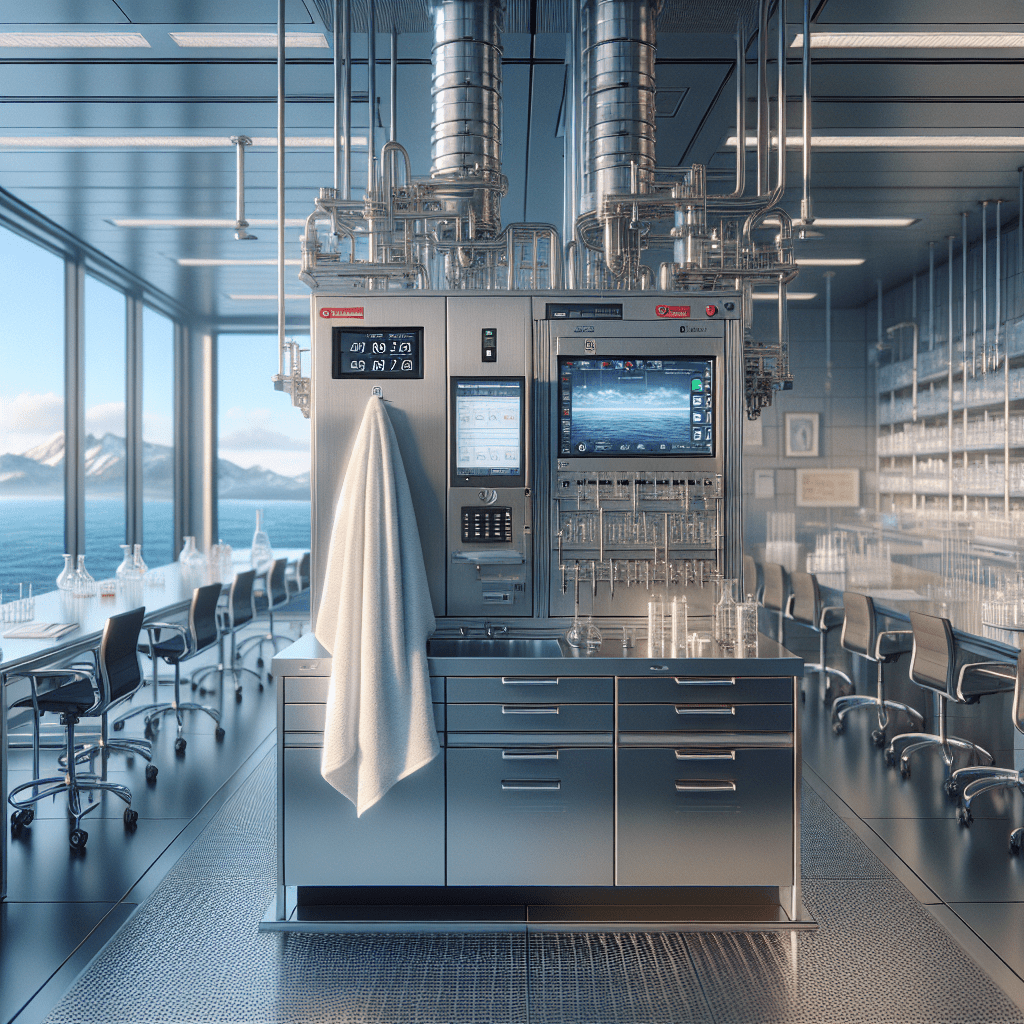Emergency blankets might not look like much—they're thin, shiny, and lightweight. But ask any outdoor enthusiast, paramedic, or survivalist, and they'll quickly attest to their life-saving capabilities. Whether you're scaling mountains, enduring freezing conditions, or providing first aid, an emergency blanket could mean the difference between comfort and survival.
This blog will explore how emergency blankets work, what makes them essential in various situations, and how to choose the right one for your needs. By the end, you'll have a comprehensive understanding of these innovative survival tools and why they belong in every emergency kit.
What are Emergency Blankets?
Emergency blankets, often called space blankets or Mylar blankets, are made from a thin, reflective material typically made of polyester film coated with aluminum. They were first developed by NASA in the 1960s for use in space and have since become a staple in emergency kits.
These blankets work by trapping heat and reflecting it to the body, keeping you warm and regulating your body temperature. They also help prevent hypothermia by blocking wind and moisture. In addition to their insulating properties, emergency blankets can also be used as a signaling device due to their reflective surface.
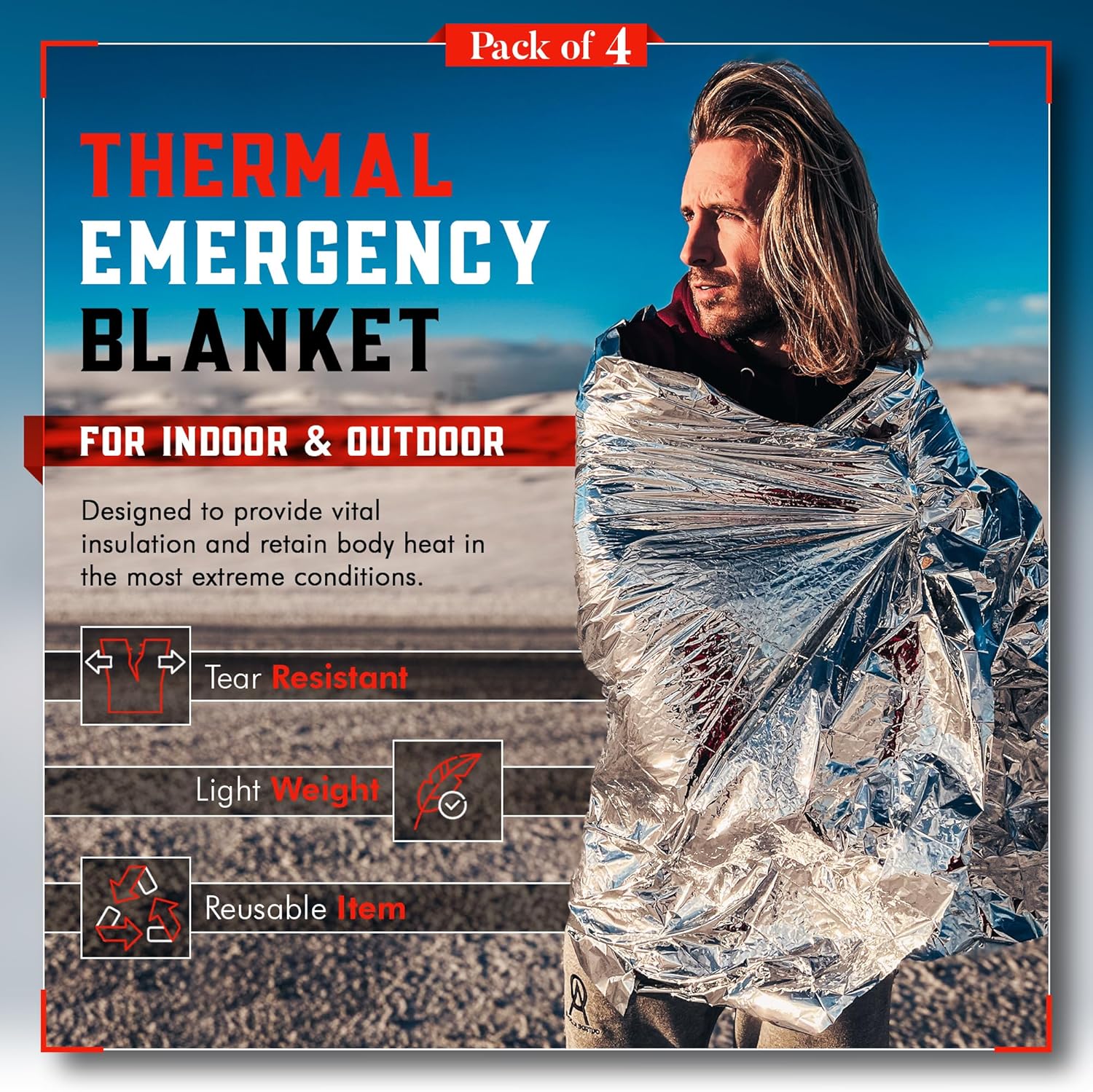
How Do They Keep You Warm?
Emergency blankets utilize two main mechanisms to keep you warm:
Thermal Insulation and Retention
Emergency blankets help reduce heat loss, particularly by radiation. They are typically made of a thin, flexible sheet of plastic coated with a metallic layer (usually aluminum). This metallic surface reflects up to 90% of your body heat back to you, helping you stay warm even in freezing temperatures.
Moreover, by minimizing heat radiation, these blankets prevent rapid drops in body temperature, reducing the risk of hypothermia. This makes them crucial in scenarios where keeping warm can be lifesaving, such as after a cold water rescue or during a night stranded in the wilderness.
Reflective Properties
Emergency blankets don't just trap heat—they also protect against heat absorption. When used during intense heat or direct sunlight, the reflective side can be turned outward, deflecting sunlight away and keeping you cool. This versatility makes them indispensable in all kinds of extreme weather conditions.
How We Lose Body Heat?
Understanding how our body loses heat is essential to comprehend how emergency blankets work. Our body loses heat in three ways: convection, conduction, and radiation.
Convection
Convection is the transfer of heat through a fluid medium, such as air or water. In this process, warm air near our skin rises and gets replaced by cooler air, causing us to lose heat continuously.
To prevent this type of heat loss, it's essential to create a barrier between ourselves and the cold environment. Emergency blankets do precisely that by blocking wind and moisture from reaching our skin.
Conduction
Conduction is the transfer of heat through direct contact with another object or surface. When our bare skin touches a cold surface, heat transfers from our body to the colder object, resulting in heat loss.
Emergency blankets use their reflective and insulating properties to prevent this type of heat loss. By trapping the body's heat and reflecting it, they create a barrier that prevents direct contact with cold surfaces.
Radiation
Radiation is the transfer of heat through electromagnetic waves. Our bodies lose most of their heat through radiation, making it crucial to control this process to maintain a stable body temperature.
As mentioned earlier, emergency blankets work by reflecting up to 90% of your body's radiant heat back towards you. This enables you to retain your body's warmth and avoid rapid temperature drops.
Uses and Benefits of Emergency Blankets
Emergency blankets offer exceptional utility, making them essential for people, including hikers and emergency responders. Let's explore their most common applications and benefits:
Outdoor Activities
When it comes to outdoor activities, emergency blankets prove to be a versatile and invaluable tool. Here are some of the ways you can utilize them in various outdoor pursuits:
-
- Camping: Emergency blankets can serve as an additional layer of insulation inside sleeping bags, providing extra warmth on chilly nights. They also work well as ground covers to protect against moisture and cold seeping from the ground.
-
- Hiking/Climbing: Emergency blankets are essential for preventing hypothermia if you find yourself stranded or injured in cold conditions. By wrapping yourself in the blanket, you can retain body heat and keep yourself warm until help arrives.
-
- Boating: Whether you're out on a kayaking adventure or sailing the open waters, emergency blankets are a crucial safety item. In the event of capsizing or prolonged exposure to water and wind, they provide an extra layer of protection against the elements, helping to maintain body temperature and prevent hypothermia.
-
- Outdoor Events/Sports: Attending an outdoor sports event or a concert? Don't forget to bring an emergency blanket. They can provide added warmth during chilly evenings or unexpected temperature drops, ensuring your comfort throughout the event.
-
- Picnics/Beach Trips: Emergency blankets can come in handy even on sunny days. Their reflective side can create shade or protect against excessive heat by deflecting sunlight away. This feature is especially useful during beach trips or picnics when limited shade is available.
Including an emergency blanket in your outdoor gear can offer peace of mind and help you stay prepared for various weather conditions and unexpected situations.
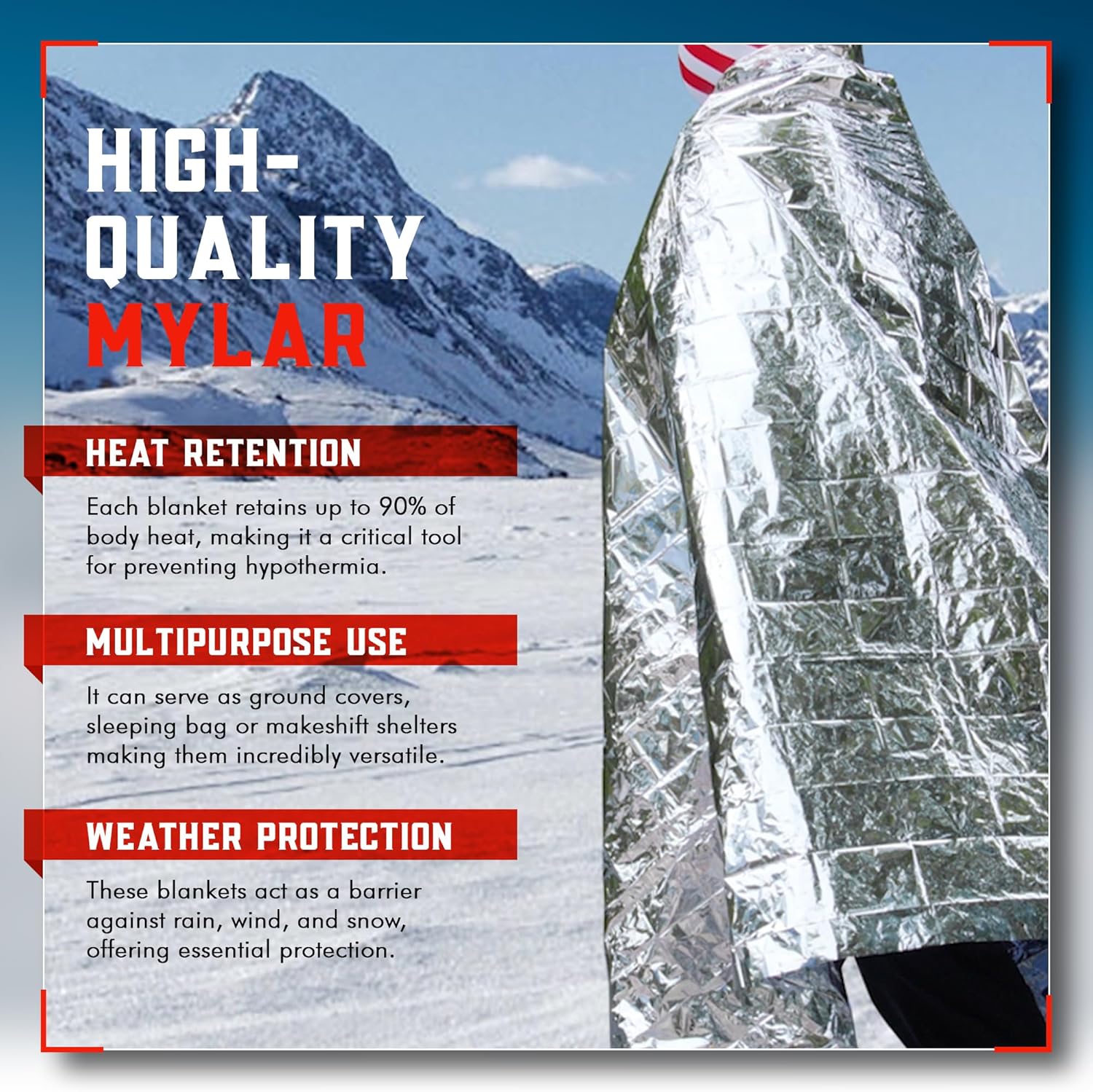
First Aid and Emergency Situations
Emergency blankets are crucial in providing first aid and support during emergencies. Their versatile nature makes them valuable tools for various scenarios, including:
-
- Shock Management: When someone experiences shock, maintaining their body temperature becomes crucial to prevent further medical complications. Emergency blankets can be swiftly deployed to provide warmth and help stabilize the individual's condition.
-
- Post-Accident Care: In emergencies involving injured or displaced individuals awaiting medical assistance, emergency blankets are essential for providing comfort and insulation. They help regulate body temperature and prevent hypothermia, particularly when immediate medical attention is delayed.
-
- Weather Disasters: During severe weather events like earthquakes or hurricanes, emergency blankets can protect individuals from the elements. They provide a layer of insulation against cold temperatures and can help retain body heat, increasing the chances of survival in challenging conditions.
Benefits Compared to Traditional Blankets
Traditional blankets are bulky, heavier, and less effective in extreme scenarios. Emergency blankets, in comparison, are lightweight, simple to store, and deliver excellent insulation despite their small size. They're also waterproof, windproof, and easy to use in various capacities, including as improvised tarps or reflective signals to attract help.
Choosing the Right Emergency Blanket
Not all emergency blankets are created equal. To ensure you pick a high-quality blanket suited to your needs, consider the following factors:
-
- Size: Check the blanket's dimensions. Larger blankets not only cover more body surface area but can also double as temporary shelters or ground covers. Most emergency blankets are designed to fit adults, but it’s wise to ensure a proper fit based on your specific requirements.
-
- Material:The standard Mylar blanket is effective for most situations, but some newer designs use reinforced or thicker materials for improved durability. Determine whether you're buying for short-term use (e.g., first aid) or repeated outdoor applications and choose accordingly.
-
- Durability: How frequently do you intend to use the blanket? Some emergency blankets are designed for one-time use, while others are reusable and made from sturdier, tear-resistant material.
-
- Portability: Weight and size matter when packing light for outdoor adventures. Look for compact options that fit easily into backpacks, glove boxes, or first-aid kits without taking up much space.
-
- Additional Features: Some emergency blankets come equipped with added features such as grommets for tying down, patterns for camouflage use, or lining to prevent crinkling—which can make the experience of using them more pleasant and practical.
Mart Cobra Emergency Blankets
When it comes to emergency preparedness, Mart Cobra is a trusted brand that offers reliable and high-quality emergency blankets. Our blankets are specifically designed to provide essential protection and insulation in emergencies. Here are some key features and benefits of Mart Cobra Emergency Blankets:
-
- Mart Cobra Emergency Blankets are made from durable and tear-resistant material, ensuring they can withstand harsh conditions and provide reliable insulation when needed most.
-
- Our blankets are designed to reflect and retain body heat, helping to prevent hypothermia in emergencies. They effectively trap and conserve body heat, providing warmth and comfort in adverse conditions.
-
- Mart Cobra Emergency Blankets are waterproof and windproof, ensuring protection against moisture and wind chill. This feature is particularly important in outdoor and survival scenarios, where exposure to the elements can be a significant challenge.
-
- We understand the importance of portability in emergencies. Our emergency blankets are lightweight and compact, making them easy to carry in backpacks, emergency kits, or vehicles without adding excessive weight or taking up valuable space.
-
- Mart Cobra Emergency Blankets are versatile, serving multiple purposes beyond insulation. They can be used as ground covers, makeshift shelters, or even as signaling devices due to their reflective properties.
Can Fire Blankets Be Used as Emergency Blankets?
Fire blankets and emergency blankets may seem similar at first glance, but they serve very different purposes. Fire blankets are made of fire-resistant materials like fiberglass and are designed to extinguish small fires by smothering them. They’re ideal for use in kitchens or industrial spaces prone to fire hazards.
While fire blankets can provide some degree of insulation in an emergency scenario, their weight, rigidity, and lack of portability make them a poor substitute for an actual emergency blanket. Similarly, emergency blankets cannot be used to fight fires, as they’re not fireproof and would melt or burn upon direct contact with flames.
Each serves a unique function, so investing in both is best if you’re preparing a comprehensive emergency kit.
Uses of Fire Blankets
Fire blankets serve a range of purposes in fire safety and emergencies. Here are a few common uses:
-
- Kitchen Fires: Fire blankets are particularly useful for smothering small, contained fires in the kitchen, where they can be used to extinguish flames arising from cooking oils, pots, or pans.
-
- Hot Objects: Fire blankets can be used to handle hot objects safely by wrapping them, providing insulation against heat, and preventing burns.
-
- Escaping from Fire:In emergency situations, fire blankets can be used as a shield to protect against heat and smoke while making an escape from a burning building.
-
- Clothing Fires:If someone's clothing catches fire, a fire blanket can be used to quickly smother the flames, helping to minimize injury and prevent the fire from spreading.
Remember, fire blankets should always be used per proper safety protocols and guidelines.

FAQS
Q. What are some alternative names for the emergency blanket?
A: You may also hear an emergency blanket referred to as a space blanket, thermal blanket, first aid blanket, space blanket, or survival blanket.
Q: Can I use an emergency blanket inside a sleeping bag?
A: Absolutely! Using an emergency blanket inside a sleeping bag can provide an extra layer of insulation and help retain body heat, especially in colder conditions.
Q: Are emergency blankets the same as foil blankets? Q: Can emergency blankets be used as a part of other emergency gear?
A:Yes, emergency blankets are often referred to as foil blankets due to their metallic, heat-reflective material.
Q: Can emergency blankets be used as a part of other emergency gear?
A: Definitely! Emergency blankets are versatile and can be used in various emergencies. They are commonly included in emergency kits, first aid kits, and survival gear due to their compact size and effectiveness in providing warmth and protection.
Ensure You’re Always Prepared
Emergency blankets may be simple in design, but their effectiveness in outdoor and survival situations is unmatched. By reflecting body heat, providing weather resistance, and offering versatility, they are an essential tool in the arsenal of outdoor enthusiasts, first aid responders, and survivalists.
With Mart Cobra Emergency Blankets, you can trust that you’re getting a reliable and high-quality product that will help keep you warm and safe in emergencies. Don’t wait until disaster strikes – make sure to include an emergency blanket in your preparedness kit today!



